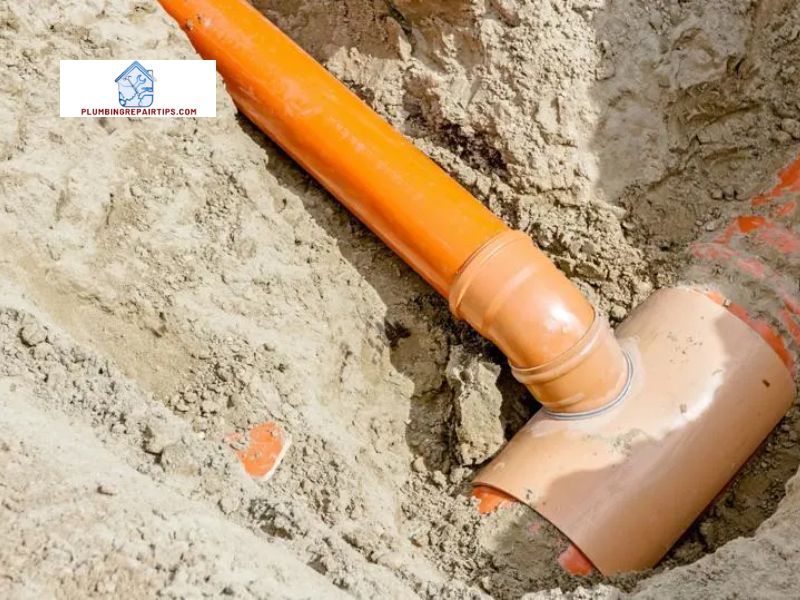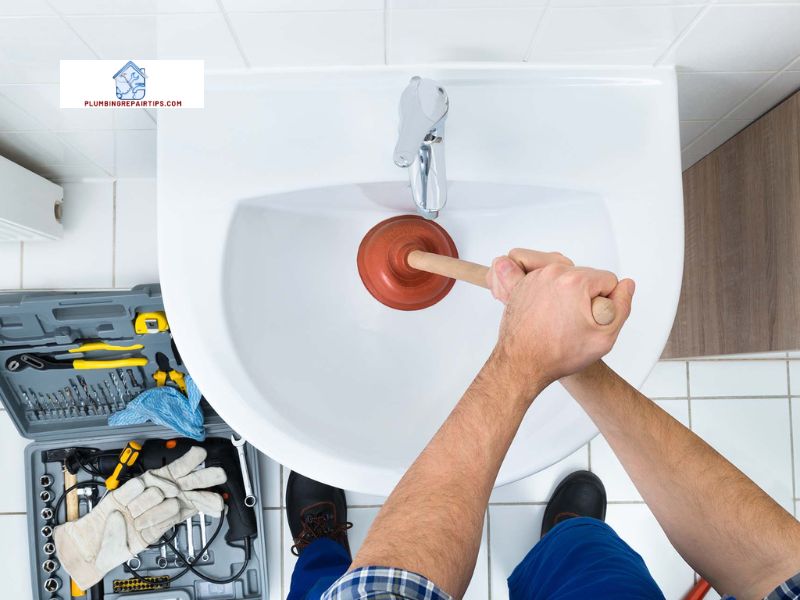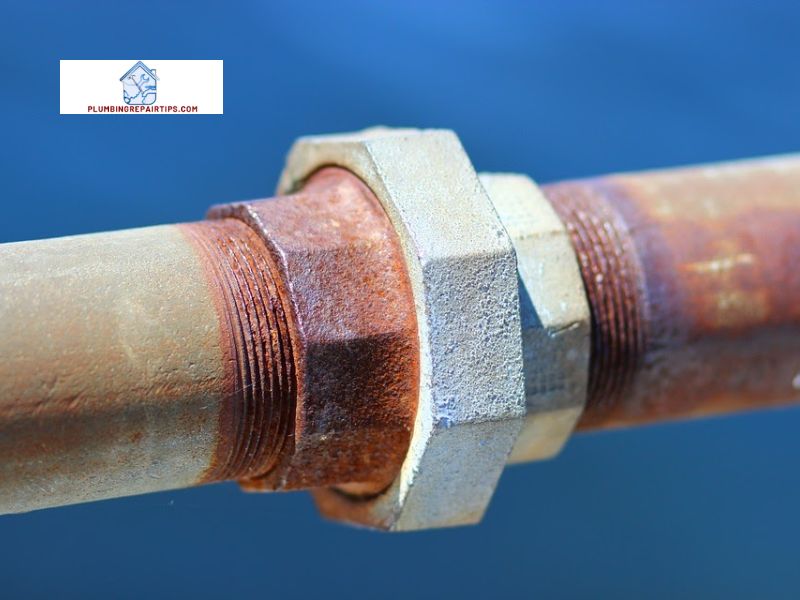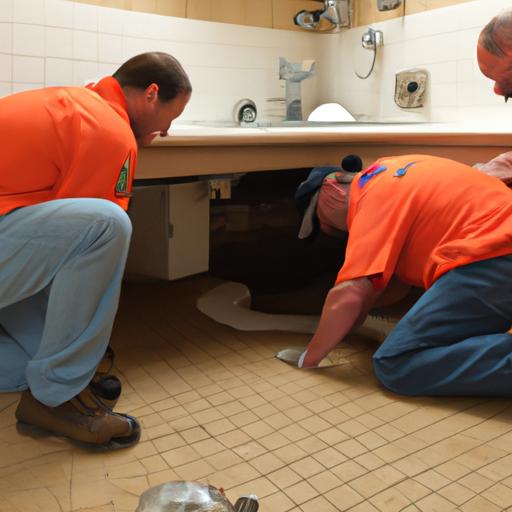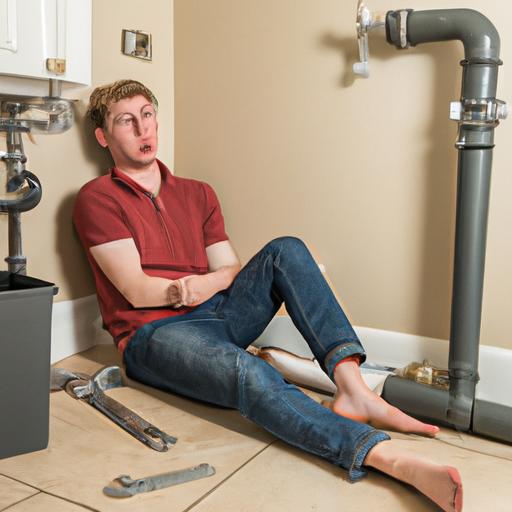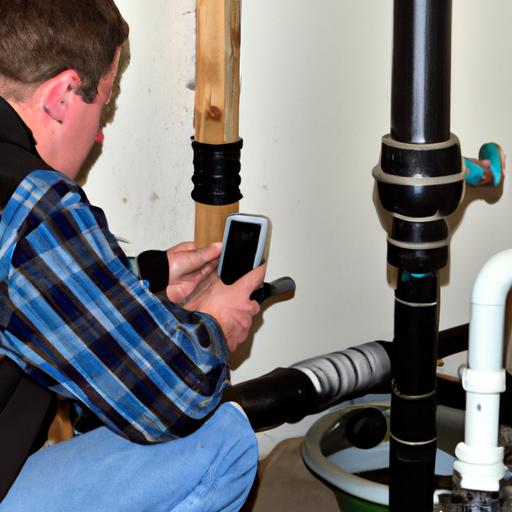Introduction
Have you ever found yourself in a panic when a plumbing issue arises? The dripping faucet, the clogged drain, or even the dreaded leaky pipe can send shivers down anyone’s spine. But fear not! With the power of do it yourself plumbing repairs, you can take matters into your own hands and become the hero of your own household. In this article, plumbingrepairtips.com will explore the importance of DIY plumbing repairs and the incredible benefits that come with learning to fix plumbing issues on your own.
Importance of DIY Plumbing Repairs
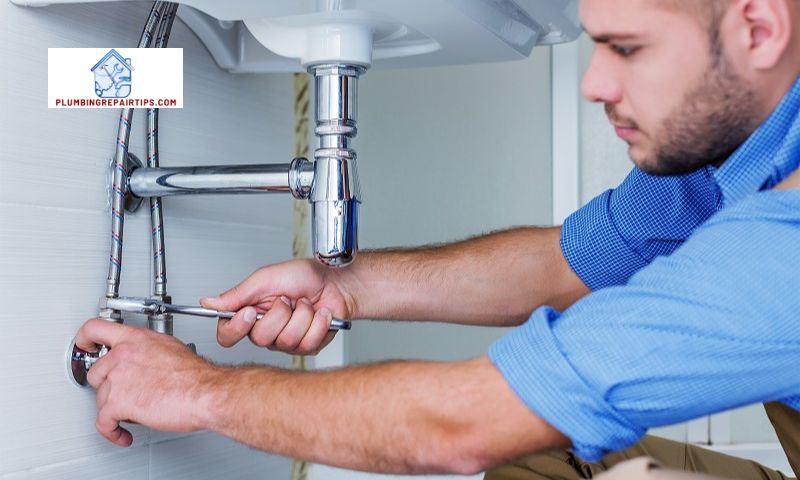
Picture this: It’s the middle of the night, and you hear the sound of water dripping incessantly. Panic sets in as you imagine the damage that could be occurring behind the walls. In such situations, having the knowledge and skills to handle basic plumbing repairs can be a game-changer. By embracing the world of DIY plumbing, you can save yourself from costly emergency plumber visits and the stress that comes with them.
Benefits of Do It Yourself Plumbing Repairs
Imagine the satisfaction of solving a plumbing problem without having to rely on external help. Learning to fix plumbing issues on your own not only empowers you but also saves you time, money, and hassle. No longer will you have to wait for a professional to arrive or worry about the inconvenience caused by a malfunctioning plumbing system? By taking control of the situation, you can restore peace and functionality to your home with your own two hands.
Embarking on the journey of DIY plumbing repairs opens up a world of possibilities. Not only will you gain a valuable life skill, but you will also develop a newfound confidence in your ability to handle household mishaps. So, grab your tools and get ready to dive into the realm of DIY plumbing repairs. In the following sections, we will guide you through common plumbing problems, essential tools, step-by-step repairs, safety precautions, and knowing when it’s time to call in the professionals. Together, we will equip you with the knowledge and expertise needed to conquer any plumbing challenge that comes your way.
Common Plumbing Problems
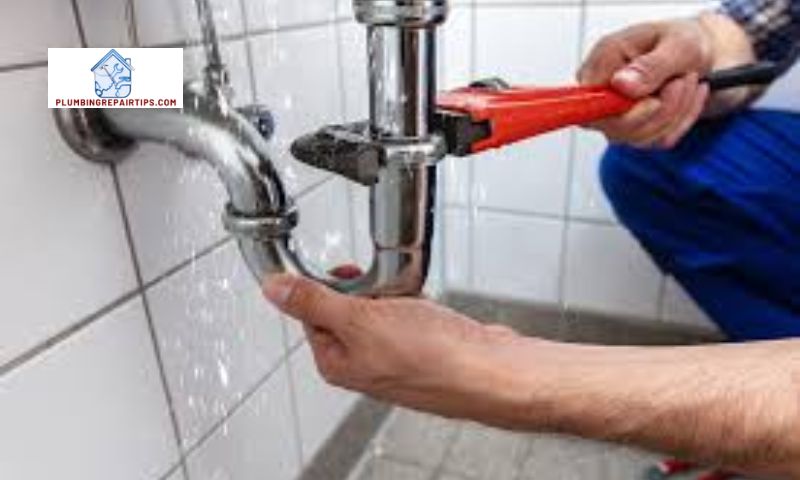
Identifying Common Plumbing Issues
Plumbing problems can strike at any time, causing inconvenience and frustration. By familiarizing yourself with common plumbing issues, you can be better prepared to tackle them head-on. Here are a few problems that frequently occur in households:
- Dripping Faucets: That incessant drip-drip-drip not only wastes water but can also drive you crazy. A worn-out washer or faulty valve is often the culprit behind this common plumbing annoyance.
- Clogged Drains: Whether it’s in the kitchen or bathroom, a clogged drain can disrupt your daily routine. Hair, grease, soap residue, and foreign objects are typical causes of drain blockage.
- Running Toilets: A toilet that continues to run even after flushing is not only wasteful but can also lead to a higher water bill. Faulty flappers or fill valves are usually to blame for this frustrating issue.
- Leaky Pipes: Leaky pipes can cause water damage and lead to mold growth if left unattended. Common causes include corrosion, excessive water pressure, or poor pipe connections.
Understanding the Root Causes of Plumbing Problems
To effectively solve plumbing problems, it’s crucial to understand their underlying causes. By addressing the root issues, you can prevent recurring problems and ensure long-term solutions. Here are a few common reasons behind plumbing mishaps:
- Age and Wear: Over time, plumbing systems deteriorate, and components wear out. Aging pipes, valves, and fixtures are more prone to leaks, clogs, and other issues.
- Improper Installation: Poor installation practices can lead to a host of plumbing problems. Inadequate sealing, incorrect pipe sizing, and improper connections can result in leaks, reduced water pressure, and other issues.
- Hard Water: Hard water contains high mineral content, which can cause mineral buildup and clog pipes and fixtures over time. This can lead to reduced water flow and compromised plumbing performance.
- Lack of Maintenance: Neglecting routine maintenance can exacerbate plumbing problems. Regular inspections, cleaning, and addressing minor issues promptly can prevent major headaches down the line.
By recognizing common plumbing problems and understanding their root causes, you are well on your way to becoming a DIY plumbing expert. In the next section, we will delve into the essential tools you need to have in your plumbing toolkit.
Essential Tools for DIY Plumbing Repairs

The Right Tools for the Job
When it comes to DIY plumbing repairs, having the right tools at your disposal can make all the difference. Here are some essential tools that every aspiring DIY plumber should have in their arsenal:
1. Pipe Wrench
A pipe wrench is a must-have tool for any plumbing repair project. Its adjustable jaws provide a firm grip, allowing you to loosen or tighten pipes with ease. From removing old fittings to installing new ones, a pipe wrench is your trusted companion in the world of plumbing.
2. Plunger
No DIY plumber’s toolkit is complete without a trusty plunger. This simple yet effective tool can save the day when it comes to clearing clogged drains and toilets. With a few plunges, you can dislodge debris and restore proper water flow in no time.
3. Adjustable Wrench
An adjustable wrench is a versatile tool that should never be overlooked. It allows you to tighten or loosen nuts and bolts of various sizes, making it indispensable for tasks like repairing faucets, showerheads, or toilet tanks.
4. Pipe Cutter
For more extensive plumbing projects, a pipe cutter becomes an invaluable tool. It enables you to make precise cuts on pipes, ensuring a proper fit when replacing sections or installing new plumbing fixtures.
The Importance of Having the Right Tools
Having the necessary tools for DIY plumbing repairs not only saves you money but also ensures that the job is done correctly. Using the right tools minimizes the risk of damaging pipes or causing leaks, preventing further issues down the line. Additionally, it saves you from the frustration of attempting repairs with inadequate tools, leading to wasted time and energy.
Remember, investing in quality tools is a smart decision that pays off in the long run. By equipping yourself with a reliable set of plumbing tools, you’ll be prepared to handle a wide range of repairs and maintenance tasks confidently.
In the next section, we will delve into a step-by-step guide for common DIY plumbing repairs. With your toolkit ready, you’ll be well-equipped to tackle any plumbing challenge that comes your way.
Step-by-Step Guide to DIY Plumbing Repairs
Are you ready to roll up your sleeves and tackle those plumbing issues head-on? In this section, I’ll provide you with a step-by-step guide to help you navigate through common plumbing repairs. From fixing a leaky faucet to unclogging a stubborn drain, you’ll be equipped with the knowledge and confidence to handle these repairs like a pro. So let’s dive in!
Repair 1: Fixing a Leaky Faucet
- Turn off the water supply: Before starting any repair, it’s crucial to shut off the water supply to the affected faucet. Look for the shut-off valve beneath the sink and turn it clockwise to stop the water flow.
- Disassemble the faucet: Carefully remove the handle and any decorative caps to expose the cartridge or valve inside. Use a wrench or pliers, if necessary, but be gentle to avoid causing any damage.
- Replace the faulty parts: Inspect the cartridge or valve for any signs of wear or damage. If needed, take it to your local hardware store to find a suitable replacement. Install the new part, ensuring it fits snugly and is aligned correctly.
- Reassemble and test: Put the faucet back together in the reverse order of disassembly. Turn the water supply back on and test the faucet for leaks. Congratulations! You’ve successfully fixed a leaky faucet.
Repair 2: Unclogging a Drain
- Start with a plunger: For minor clogs, a plunger can work wonders. Place it over the drain and create a tight seal. Push and pull vigorously to create suction and dislodge the blockage. Repeat several times if necessary.
- Try a natural remedy: If the plunger doesn’t do the trick, consider using a mixture of baking soda and vinegar. Pour half a cup of baking soda down the drain, followed by half a cup of vinegar. Let it sit for 15-20 minutes, then flush with hot water.
- Use a drain snake: For stubborn clogs, a drain snake can be your best friend. Insert it into the drain and twist it to break up the blockage. Pull it out carefully, disposing of any debris that comes out.
- Prevent future clogs: To avoid future clogs, be mindful of what goes down your drains. Use drain covers to catch hair and debris, and avoid pouring grease or oil down the kitchen sink.
By following these step-by-step instructions, you’ll be well on your way to becoming a DIY plumbing expert. Remember, take your time, be patient, and don’t hesitate to seek professional help if needed. In the next section, I’ll share some valuable safety precautions and tips to ensure a successful and secure DIY plumbing experience.
Safety Precautions and Tips
Importance of Safety Measures during Plumbing Repairs
When it comes to DIY plumbing repairs, safety should always be your top priority. Even though you may feel confident in your abilities, it’s crucial to remember that plumbing systems can be complex and potentially hazardous. By prioritizing safety measures, you can prevent accidents, injuries, and further damage to your home. So, before diving into any plumbing project, keep the following precautions in mind:
1. Turn off the water supply
Before starting any plumbing repair, locate the main water shut-off valve and turn it off. This simple step will prevent unexpected water flow and minimize the risk of flooding or water damage. Knowing how to stop the water supply is an essential skill that every DIY plumber should possess.
2. Protect yourself with proper gear
Plumbing repairs often involve handling sharp tools, chemicals, and working in tight spaces. To safeguard yourself, always wear protective gear such as gloves, safety glasses, and closed-toe shoes. These simple precautions can shield you from potential injuries and ensure a safe working environment.
Tips for a Safe and Successful DIY Plumbing Experience
Now that we’ve addressed the importance of safety, let’s explore some valuable tips to make your DIY plumbing experience a triumph:
1. Educate yourself
Before tackling any plumbing repair, take the time to educate yourself. Watch video tutorials, read reliable guides, or consult reputable sources to understand the repair process thoroughly. The more knowledge you have, the better equipped you’ll be to handle unexpected challenges.
2. Start with small projects
If you’re new to DIY plumbing repairs, it’s best to start with smaller, manageable projects. This approach allows you to build confidence and gradually increase your skills. As you gain experience, you can take on more complex repairs with ease.
3. Know your limits
While DIY plumbing repairs can save you money, it’s important to recognize when a project exceeds your capabilities. Don’t hesitate to call a professional if a repair seems too complex or if you’re unsure about the steps involved. Remember, your safety and the integrity of your plumbing system are paramount.
By following these safety precautions and tips, you can embark on your DIY plumbing journey with confidence. Remember, there’s no shame in seeking professional help when needed. Now, let’s move forward to the next section, where we’ll provide you with a comprehensive guide to various DIY plumbing repairs.
Conclusion
In conclusion, the world of DIY plumbing repairs is a realm of empowerment and self-sufficiency. By taking the initiative to learn how to fix plumbing issues on your own, you can save yourself from the stress, inconvenience, and hefty expenses that come with relying on professional plumbers. From fixing a leaky faucet to unclogging a stubborn drain, the ability to tackle these common plumbing problems will give you a sense of accomplishment and pride.
Not only does DIY plumbing repairs offer financial benefits, but it also provides you with a valuable life skill. Being able to handle basic plumbing repairs not only saves you money but also gives you the confidence to handle other household issues that may arise. It’s a skill that can be passed down through generations, empowering your family members to take control of their own homes.
However, it’s important to recognize that there are limits to what can be accomplished through DIY plumbing repairs. In some cases, it’s best to leave the more complex or dangerous tasks to the professionals. Knowing when to call in the experts is a sign of wisdom and responsibility.
So, embrace the world of DIY plumbing repairs with enthusiasm and curiosity. Equip yourself with the necessary tools, follow step-by-step guides, and always prioritize safety. By doing so, you’ll not only save money and time but also gain a sense of accomplishment and self-reliance. Remember, you have the power to be the hero of your own plumbing adventures. Happy repairing!
